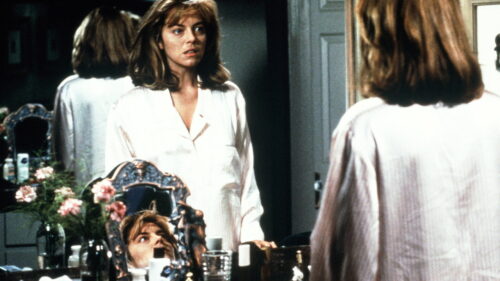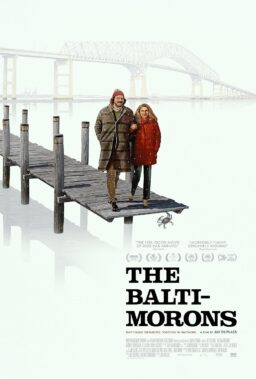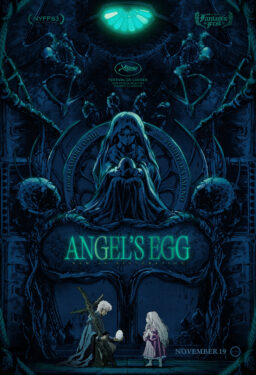I have Spectrum Wi-Fi and cable service at home, and it offers “free” on-demand movies, so I called one of them up recently: “Harry Potter and the Half-Blood Prince.” Spoiler alert for anyone who hasn’t seen this 15-year-old film: Towards the end, the beloved wizard Dumbledore is killed by his colleague Severus Snape while the hero looks on in horror. There’s more to that bit of story than initially meets the eye, but what’s important to know here is that it’s one of the all-time mass culture downers, up there with the deaths of Bambi’s mother, Simba’s dad, Obi-Wan Kenobi, and half the population of the Marvel Cinematic Universe. I was looking forward to wallowing in the doom-and-gloominess of Dumbledore tumbling into the abyss.
But it wasn’t possible because as soon as he started falling, the movie cut to an ad for PetSmart.
I’ve seen this happen with increasing regularity while watching films and TV shows on streaming platforms, whether it’s cable TV or Amazon’s FreeVee (formerly IMDb TV). I first noticed how bad it had gotten while watching “Columbo” reruns on the latter service during the pandemic semi-lockdown of 2020. Ads would just appear, seemingly at random, often cutting off Columbo or his quarry in the middle of a monologue. Then I noticed it happening during on-demand content across platforms, including YouTube, and not just with visual content: Sometimes you’ll be listening to a full album and ads will appear in the middle of songs. It even happens on the official YouTube channels of record labels.
Are tech companies deliberately making the experience as bad as possible to get more money out of us? I wonder. When you log onto YouTube or similar services, the first thing you usually see is an ad promoting the ad-free version of the service. It has a feeling of a protection racket: If you don’t want us roughing up the art, pay us. They are already making money from ads, and from selling your personal information, but if you want even a smidgen of a work’s integrity to be preserved you have to pay extra.
“But commercial interruptions aren’t a new thing, Matt,” objects a hypothetical reader of this piece. True! But as irritating as commercial interruptions have always been (the editing of movies for content was just as irritating, and more pernicious), they at least tried to do things to soften the annoyance of the interruption. There was a sense that the people doing the interrupting understood that they were doing something deeply obnoxious and fundamentally wrong, and therefore had an obligation to smooth the transition from movie to ad. Movies shown on commercial TV are meticulously prepared for that type of fragmented presentation. An editor goes through the running time of the film, figures out where the ad breaks might go, and does quick fade-ins and fade-outs to indicate proper placement. In between is where the ads are supposed to go. If you’re ever watching a movie on a traditional broadcast or cable platform and pay attention to the rhythm of scenes, you’ll get to the point where you can sense another transition coming.
I’m not saying that anybody deserves a medal of valor for creating gaps for ads. What I’m saying is that it’s not your imagination: art and entertainment are being straight-up mutilated by corporations now, without the slightest genuflection toward the idea that they have innate value.
Corporations used to cut movies for secondary markets with a scalpel. Now they use a meat-ax. Sometimes it seems like they close their eyes before swinging the ax. I bet if I watched “Jaws” on demand right now, when Quint slid down the deck towards the shark’s open mouth there’d be an ad for dietary supplements.
Sometimes they stick whole other programs into the ad spaces. One time I tried to watch one of the “Underworld” movies on-demand from our cable service, and it not only jammed several regular-length ads into the opening sequence, it then made me wait 15 additional minutes while it showed me an inspirational TV newsmagazine segment about a young hockey player recuperating from terrible injuries.
For the life of me, I cannot understand how or why that piece got inserted in there (maybe to promote a channel related to the company that released the film?). Don’t get me wrong: it was a heartwarming story. But I was there to watch vampires and werewolves. I tried to watch another on-demand action-horror movie a couple of days later, and the cable company inserted not one but two sports news stories into the movie, back-to-back. You couldn’t fast-forward through them. The tech wouldn’t allow it. I gave up a couple of minutes into the second inspirational sports news story. I just wanted to watch “Blade 2.” Why wouldn’t they let me do that?
This is what happens when we allow tech guys and money guys to redefine creativity as “content,” a gross, degrading word that reduces centuries of imaginative efforts by the human race to a tube of flavorless gray paste.
I first heard a tech guy refer to writing as “content” almost 25 years ago, during a presentation at the Star-Ledger of New Jersey about the brilliant idea of putting all of that daily newspaper’s content online for free and “monetizing” it with display ads. It’s everywhere now, that word. “Content.” Even some artists have surrendered and now use the language of the oppressor. Maybe there’s widespread understanding, perhaps weary acceptance, that the tech industry has never actually viewed creative effort as anything but a pack mule that can be saddled up with commerce. Whether the money is generated by selling users’ personal information to third parties or by encrusting it with additional ads is of no importance to them.
It’s been explained to me that the random cruddy ad-breaks problem might be traced back to coding issues. The software for the presentation platform is looking for the correct spots where ads can be placed but—because of somebody’s technical failure—failing to accurately detect them.
But this is more an explanation than an excuse. It’s like being told that the reason so many night scenes shot during the era of digital cinematography are illegible coffee-colored smears is because your TV is improperly calibrated, or not expensive enough. Incomprehensible night photography didn’t used to be a common problem. Ads in the middle of a scene, sometimes cutting off a sentence or an important piece of action, didn’t used to be a common problem, either. Both are symptoms of a culture that has stopped even pretending to care about presentation. We are now at the point in the history of show business where a bad experience is free and a decent one costs extra.












